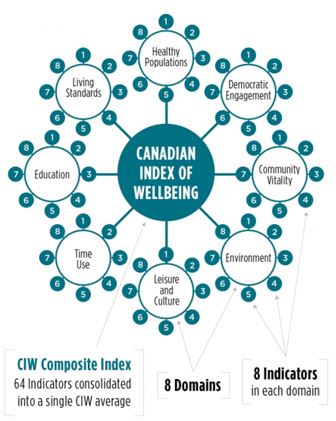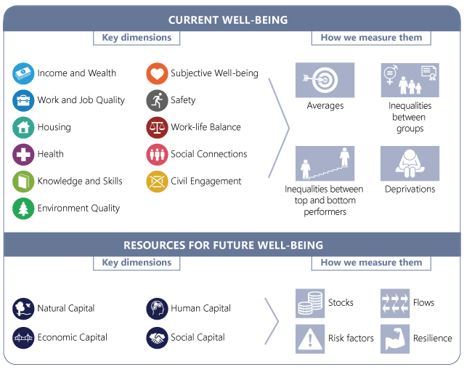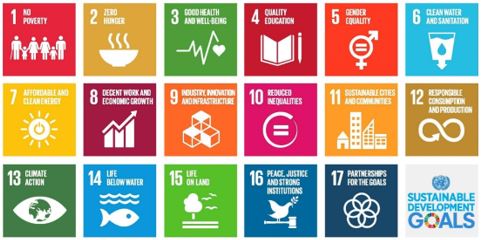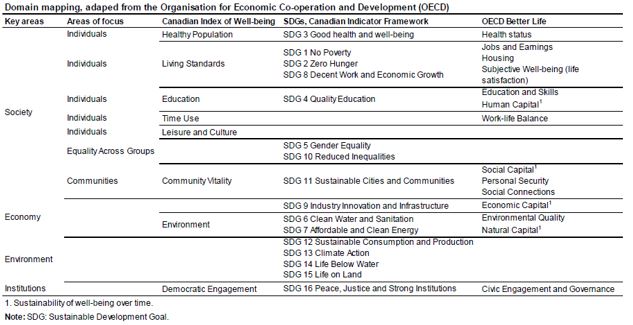The Economics and Statistics Division maintains archives of previous publications for accountability purposes, but makes no updates to keep these documents current with the latest data revisions from Statistics Canada. As a result, information in older documents may not be accurate. Please exercise caution when referring to older documents. For the latest information and historical data, please contact the individual listed to the right.
<--- Return to Archive
For additional information relating to this article, please contact:
July 21, 2021STUDY: MOVING FORWARD ON WELL-BEING (QUALITY OF LIFE) MEASURES IN CANADA Statistics Canada recently released a study called “Moving Forward on Well-being (Quality of Life) Measures in Canada.” The study is motivated by a growing desire to integrate information on economic, social and environmental conditions in order to measure well-being and the progress of nations. Gross domestic product is measure of economic activity, not a metric to capture the social, environmental, or distributional outcomes
Countries around the world have incorporated measures of well-being into their policy process in varying ways. The Government of Canada is moving in this direction, with some Departments and Agencies currently leveraging well-being data and indicators to inform policy development. Given the growing popularity of these measures, this study outlines three of the existing frameworks that can be used to measure well-being (or quality of life) and discusses subjective-well being as an alternative. Statistics Canada is the primary data source or contributor to these three indicator frameworks in Canada. The study also highlights six current issues where there are knowledge gaps, as to how these affect well-being of a country’s citizens, and describes ways in which Statistics Canada can leverage existing data or new collection methods to address these gaps.
Frameworks to address well-being
The three frameworks described are the Canadian Index of Well-being, the OECD’s Better Life Initiative (How’s Life?), and the United Nations Sustainable Development Goals.
The Canadian Index of Well-Being (CIW) is comprised of eight domains that contribute to, and affect, the well-being of Canadians: community vitality, democratic engagement, education, environment, healthy populations, leisure and culture, living standards, and time use. Each of the eight domains also have eight sub-indices, for a total of 64 indicators and an aggregate CIW (see Figure 1 for illustration). The most recent annual report was published using data up to 2014. There are also provincial results for Ontario, Saskatchewan and Nova Scotia using the CIW framework.
Figure 1: Canadian Index of Well-being outline

Source: University of Waterloo, Faculty of Applied Health Sciences
The OECD’s Better Life Initiative is comprised of three components: building the evidence base (including a framework and the How’s Life? report), building better measures, and stimulating debate. It was designed to support the OECD’s mandate of “better policies for better lives.” The How’s Life? framework identifies three pillars for understanding and measuring well-being: quality of life, material conditions and sustainability. These three pillars are supported by 11 dimensions of current well-being (eight reflecting quality of life and three reflecting material conditions) and four sources of capital to support future well-being (see Figure 2 for an illustration). How’s Life? is published every two years for over 40 countries.
Figure 2: Dimensions of the How’s Life? Framework

Source: OECD, Measuring Well-being and Progress: Well-being Research
The Sustainable Development Goals (SDGs) are part of the United Nations’ 2030 Agenda for Sustainable Development, which includes 17 Social Development Goals, 169 targets, and more than 232 indicators. These address three pillars of sustainable development: the economy, the society and the environment. They also cover five key elements, also known as the five Ps: people, prosperity, planet, peace and partnership. In 2015, Canada committed to the SDGs, with a whole-of-Canada strategy development led by the Department of Employment and Social Development and supported by Statistics Canada. The SDGs differ from the previous two frameworks as they have specific targets or goals, while the CIW and How’s Life frameworks track progress of indicators.
Figure 3: Sustainable Development Goals

Source: Government of Canada
The table below maps the similarities and differences between the three frameworks described in the study. In summary, the four key areas of well-being across the three frameworks are society, economy, environment, and institutions. The frameworks share similar areas of focus, including health, basic living standards, education and community.
Table 1: Similarities and difference between existing well-being frameworks

Source: Statistics Canada
Another option for measuring well-being is the subjective well-being approach, which uses quality of life as the primary measure of well-being. A measure such as “life satisfaction” has been argued to be used as an overall measure to quality of life. In this approach, fundamental importance is attached to the evaluations that people make of their own lives. This approach allows for better understanding of what drives differences in well-being or life satisfaction. In the 2017 World Happiness Report, results showed that three-quarters of the variation in average life evaluations observed across more than 150 countries was explained by six variables: GDP per capita, healthy life expectancy, having someone to count on in times of trouble, sense of freedom to make key life decisions, trust, and generosity.
Addressing new and existing data gaps
Statistics Canada is working to address data gaps in well-being measurement, including integrating well-being into the System of National Accounts, the standard for national accounting. The study also highlights data gaps that have been identified including themes of digitization, job quality in a changing new world of work, affordability and economic uncertainty, populism and social cohesion, neighbourhoods, communities and the built environment, and environment and climate change. The study highlights a variety of initiatives that could be undertaken to measure how these issues affect well-being, including new data collection methods, enhancing frequency of collection, linking existing data sets, and undertaking in-depth study or consultation to identify better measures of well-being in these contexts.
Source: Statistics Canada, Moving Forward on Well-being (Quality of Life) Measures in Canada
<--- Return to Archive